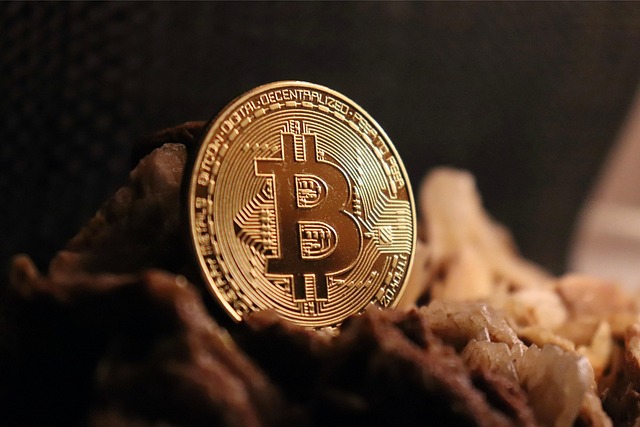Gibraltar court ends 2-month freeze of 542M PLAY tokens amid legal dispute
The Supreme Court of Gibraltar has reversed its decision to freeze 542 million PLAY tokens in a court battle between two companies tied to the Web3 game-creation platform PLAY Network.In an April 17 judgment, Gibraltar Supreme Court Judge John Restano undid his earlier February freeze of the tokens, finding it could have hurt the value of the tokens and that the evidence filed was insufficient to continue the freeze.“Whilst there may be many reasons for the drop in value of the tokens, the evidence before the court suggests that these proceedings are a factor in that regard,” he wrote.US-based Ready Makers, which operates as Ready Games, and its founder, David Bennahum, have filed a legal dispute against its Gibraltar-based subsidiary, Ready Maker (Gibraltar) Limited, and its CEO, Christina Macedon. The suit claims she took over the firm and its PLAY token that is used as a reward on the PLAY Network.Ready Games won a freeze of the tokens in February, with the Gibraltar-based Ready Maker, operating as PLAY Network, handing them over to a court-appointed custodian.The 542 million PLAY tokens are nearly two-thirds of its current circulating supply and are worth around $2.6 million. The token’s price has plummeted by over 97% since it launched in December, according to CoinGecko.PLAY has sunk over the past three months to trade for fractions of a cent. Source: CoinGeckoJudge Restano said the evidence filed by Ready Games for the freeze was “far from impressive, and raises more questions than it answers.”He added he did “not consider that this is a case where the order should be re-granted in any event,” and cited Ready Games’ failure to disclose that it was in administrative dissolution at the time of filing for the token freeze, which he called “a significant omission.”Ready Games’ Bennahum told Cointelegraph that it has filed to lodge an appeal alongside “an urgent application with the Gibraltar Court of Appeal asking them to either stay the discharge of the original injunction or grant a new injunction” so the tokens could again be frozen pending the appeal’s outcome.He added that his company disagreed with the court’s decision to lift the token freeze, saying that the Gibraltar-based firm was in an “alarming state.”Ready Maker is just a “token launch vehicle” — Ready Games founderBennahum reiterated an earlier claim that the US-based Ready Games created Ready Maker in Gibraltar with the US company’s intellectual property and funding “specifically to serve as our token launch vehicle.”“We maintain that Ms. Macedo and associated parties have wrongfully seized control of this entity and its assets,” he said. Judge Restano said in his judgment that Macedo disputed Bennahum’s claim, and regulatory filings purportedly show she is the sole controller and ultimate beneficial owner of the Gibraltar-based firm.Related: Crypto gaming has mixed Q1 as deals jump, investment totals dip: DappRadar Ready Games had said in a February statement that its court action was to “recover control” of the Gibraltar company.It added that a Delaware business court issued a temporary restraining order that required Ready Gibraltar to restore Ready Games’ access to the firm’s tech stack, such as “GitHub repositories, cloud systems, and domain accounts.”Web3 Gamer: Riskiest, most ‘addictive’ crypto game of 2025, PIXEL goes multi-game
US lawmaker targets crypto investors using Puerto Rico as a tax haven
A member of the House of Representatives has proposed legislation aimed at stopping investors from using the US territory of Puerto Rico as a crypto tax haven.According to an April 21 Bloomberg report, New York Representative Nydia Velázquez introduced the Fair Taxation of Digital Assets in Puerto Rico Act, a bill that could change existing laws in the territory to require certain investors to pay local and federal taxes on capital gains, including from digital assets. The legislation would reportedly add text to Puerto Rico’s Internal Revenue Code, making income from cryptocurrencies subject to federal tax laws.“This wave of crypto investors hasn’t helped Puerto Rico’s recovery or strengthened the local economy,” said Rep. Velázquez, according to Bloomberg. “Instead, it’s driven up housing costs, pushed out local residents, and added pressure to an island where nearly 40% of people live in poverty — all while costing the federal government billions in lost tax revenue.”Puerto Rico is well known as a tax haven for many people in the crypto industry since the territory began allowing exemptions in 2012 under Act 20 and Act 22 of the Tax Incentives Code — later consolidated as Act 60. The island has attracted investors, including Pantera Capital founder Dan Morehead, venture capitalist Brock Pierce, and online influencer Logan Paul.Related: NFT trader faces prison for $13M tax fraud on CryptoPunk profitsMissing out on crypto tax revenueRep. Velazquez’s office reportedly said Puerto Rico could lose roughly $4.5 billion in revenue from 2020 to 2026 due to the tax incentives in place. In contrast, Puerto Rico Governor Jenniffer González-Colón proposed extending Act 60, set to expire in 2035, to the end of 2055, but requiring applicants to be subject to a 4% capital gains tax rate, smaller than the typical range up to 37% in the US.It’s unclear whether the legislation proposed by Rep. Velazquez, a Democrat, would have enough political support to pass in the Republican-controlled House or Senate. Both chambers will likely consider floor votes for stablecoin legislation and a crypto regulatory framework in the coming months. Magazine: XRP win leaves Ripple and industry with no crypto legal precedent set
Astra Fintech commits $100M for Solana growth in Asia
Astra Fintech, a global blockchain payments provider, has launched a $100 million fund to support the Solana ecosystem’s growth throughout Asia, according to an April 21 announcement. Through the fund, Astra Fintech plans to deploy capital to accelerate projects and form partnerships with developers, companies, and regulators. The fund’s base of operations will be in South Korea, a country Solana’s venture arm invested in after the collapse of the Terra ecosystem in 2022.The fund will focus on projects and developers working on PayFi solutions — a conglomeration of systems that use blockchain technology to facilitate payments. Astra’s main suite of products attempts to blend traditional finance with digital currencies.According to data from Electric Capital, Solana and Solana Virtual Machine (SVM) blockchains are currently within the top 10 blockchains for developer activity, only behind Ethereum.In 2021, Solana created a $5 million development fund to spur projects in Southeast Asia. The region is a hotspot for Web3 games, a crypto use case that has proliferated on Solana due to the blockchain’s fast speeds and low transaction costs.Solana, with its ups and downsThe Solana ecosystem has had quite the ride in 2025. Its native token, Solana (SOL), rose to an all-time high of $293.31 on Jan. 19, two days after US incoming President Donald Trump launched a memecoin on the network. It trades at $136.61 at this writing, a fall of 53.4% since then. However, crypto executives and companies continue betting on the Solana ecosystem. On April 7, a group of former Kraken executives acquired Janover, aiming to transform the real estate firm into a de facto Solana treasury. Just weeks later, Upexi — a brand management and supply chain company — saw its shares surge 630% on April 21 after announcing a similar strategy. Meanwhile, Canada approved SOL staking in early April, and ARK Invest has since added exposure to Solana funds through its tech-focused ETFs.Magazine: X Hall of Flame: Solana ‘will be a trillion-dollar asset’ — Mert Mumtaz
Bitcoin price tops $88.5K as BTC doubles down on stocks decoupling
Bitcoin (BTC) doubled down on its divergence from stocks at the April 21 Wall Street open as US trade war tensions escalated. BTC/USD 1-day chart. Source: Cointelegraph/TradingViewTrade war reactions fuel BTC price gainsData from Cointelegraph Markets Pro and TradingView showed BTC/USD matching month-to-date highs above $88,000.Bitcoin continued higher after the weekly close to catch up with gold as the latter set fresh all-time highs of $3,430 per ounce.XAU/USD 1-hour chart. Source: Cointelegraph/TradingViewBy contrast, stock markets came under renewed selling pressure, with the S&P 500 and Nasdaq Composite Index both down over 2% at the time of writing.Newfound BTC price strength thus appeared to end lockstep trading with equities as part of reactions to trade-war headlines.These included warnings about the deterioration of relations with the US from both China and Japan, while US President Donald Trump renewed existing attacks on Federal Reserve Chair Jerome Powell over interest rates.Source: Donald Trump“Technology stocks have gotten crushed again over the last week. Nvidia, NVDA, is down over -15% since last Monday while multiple other Mag 7 stocks are down 10%+,” trading resource The Kobeissi Letter wrote in part of a reaction thread on X. “Without technology stocks, this market cannot bottom.”S&P 500 1-hour chart. Source: Cointelegraph/TradingViewKobeissi also referenced downside pressure on the US Dollar Index (DXY), which traded at its lowest levels since March 2022.“While the USD, DXY, falls to a new 52-week low below 99, Bitcoin and Gold are surging,” it summarized. “Markets need trade deals ASAP.”US dollar index (DXY) vs. BTC/USD chart. Source: The Kobeissi Letter/XBitcoin “institutional confidence returning”Continuing, trading firm QCP Capital struck an optimistic tone.Related: US dollar goes ‘no-bid’ — 5 things to know in Bitcoin this weekBitcoin, it argued in its latest bulletin to Telegram channel subscribers, seemed to be sharing some of gold’s limelight as a hedge against macroeconomic uncertainty after months of failure.“With equities finishing last week in the red and extending an April drawdown, the narrative of BTC as a safe haven or inflation hedge is once again gaining traction. Should this dynamic hold, it could provide a fresh tailwind for institutional BTC allocation,” it wrote.QCP even suggested that recent outflows from the US spot Bitcoin exchange-traded funds (ETFs) may soon recover.“Indeed, we’re already seeing early signs of institutional confidence returning. Spot BTC ETF flows turned positive last week with net inflows of $13.4 million, a stark contrast to the previous week’s $708 million in outflows,” the bulletin noted. “In options markets, positioning has turned more balanced. Risk reversals across tenors have flattened out, diverging from the persistent near-dated put skew that has dominated for weeks.”US spot Bitcoin ETF flows (screenshot). Source: Farside InvestorsThis article does not contain investment advice or recommendations. Every investment and trading move involves risk, and readers should conduct their own research when making a decision.
Crypto adoption will be driven by high-growth markets, with or without the US
Opinion by: Dominic Schwenter, chief operating officer of LiskThe US is in the middle of a crypto boom. Exchange-traded fund approvals have opened the door to institutional adoption, liquidity is increasing, and regulatory clarity is beginning to take shape under a more crypto-aligned administration. Filings from the Securities and Exchange Commission referencing blockchain hit an all-time high in February 2025, signaling a broader shift in how seriously the technology is being taken at the highest levels.This momentum is good for the industry. US-based crypto companies have spent nearly a decade building through regulatory uncertainty, and they deserve the attention and rewards that are finally arriving. Is institutional support finally showing up? It’s overdue — and well-earned.Zooming in on the US too much, however, puts the industry at risk of missing what’s happening elsewhere. Some of the most important crypto adoption today takes root in places far outside the spotlight.The most exciting crypto adoption isn’t happening on Wall Street. It is unfolding in high-growth markets where people use crypto not to speculate but out of necessity. These communities didn’t wait for headlines. They built through every cycle and are now setting the pace for where Web3 is going next.High-growth markets are leading in adoptionFifteen of the top 20 countries on Chainalysis’s 2024 Global Crypto Adoption Index are in high-growth regions such as Indonesia, Vietnam, the Philippines and Nigeria. These aren’t just speculative hotspots. In many of these countries, crypto is part of daily life. Unlike boom-and-bust markets, adoption here hasn’t wavered. It is grounded in utility.In many of these economies, crypto helps families facilitate remittance, offers a safer way to store value when local currencies aren’t stable, and lets small businesses move money without friction. In the West, crypto still carries the sheen of a high-risk investment. In high-growth markets, it’s already embedded into daily life. That’s what real adoption looks like.Builders are shifting to high-growth marketsAs steady, practical usage rises, builder activity follows. Currently, the global developer map is changing fast. According to the 2024 Electric Capital Developer Report, Asia now accounts for 32% of active crypto developers — a massive jump from just 12% in 2015. Over the same period, the US share dropped sharply, from 38% to 19%. The blockchain talent pool isn’t shrinking. It’s moving to where the momentum is.Additionally, 41% of all new crypto developers now come from Asia, illustrating a growing pipeline of builders emerging outside of traditional tech hubs. These aren’t just hobbyists but the next wave of founders, architects and engineers choosing to build closer to the problems crypto can solve.Recent: Bitcoin’s role as an inflation hedge depends on where one lives — AnalystThis shift isn’t limited to Central Asia. Africa, South America and Southeast Asia are all seeing steady increases in developer activity, while North America and Europe continue to decline in relative share. The message is clear: Web3 innovation is no longer anchored to a single geography. It’s being driven by builders who are closer to real-world needs — and who are designing for them.Blockchain solves real problemsThe surge in developer activity and adoption across high-growth markets isn’t happening in a vacuum. Instead, it’s tied to real-world effects. A clear example is PepsiCo South Africa’s use of blockchain for supply chain tracking in the informal trade sector. In a region where traditional infrastructure is often fragmented or absent, this implementation does what blockchain was meant to do: solve problems.Using a blockchain-powered end-to-end digital payments solution like Lov.cash, PepsiCo enables cashless payments between small, often unbanked retailers and wholesalers. The system also gave wholesalers a clear view into what was selling and where — helping them plan smarter and cut down on waste. There’s no token speculation here, no shiny non-fungible tokens — just a real solution to a real supply chain problem.Stories like this rarely get top billing, but they’re where the technology actually delivers. In places where basic infrastructure is lacking, blockchain isn’t an experiment. It’s a workaround. If the industry keeps chasing hype while ignoring this influence, it’ll miss the most significant chance to make a difference.A call to action for Web3 buildersWhat’s happening in the US is worthy of celebration — but it’s not the whole story. Real-world adoption, momentum from builders, and real use cases are accelerating in high-growth markets, where crypto is already making a difference.This is where Web3’s long-term effect will be shaped. Builders and investors should stop waiting for validation from Washington or Wall Street and start paying attention to the places where the tech is solving real problems right now.Crypto didn’t wait for the US to matter. If the goal is to build something truly global, it’s time to follow the people already using it to make things work.Opinion by: Dominic Schwenter, chief operating officer of Lisk. This article is for general information purposes and is not intended to be and should not be taken as legal or investment advice. The views, thoughts, and opinions expressed here are the author’s alone and do not necessarily reflect or represent the views and opinions of Cointelegraph.
Users being polite to ChatGPT is costing OpenAI millions — Sam Altman
OpenAI CEO Sam Altman says users sending “please” and “thank you” messages to ChatGPT is costing the company tens of millions of dollars.“Tens of millions of dollars well spent — you never know,” Altman said on April 16 after being asked to estimate the cost on X.Source: Sam AltmanAltman’s response sparked discussion about what drives users to interact with AI models in a polite manner.Some AI users say they interact politely with the bots in case AI becomes sentient and starts treating people based on how they interacted with it in the past.Source: ZvbearOthers, such as engineer Carl Youngblood, claim they’re motivated to treat the AI well for personal development:“Treating AIs with courtesy is a moral imperative for me. I do it out of self-interest. Callousness in our daily interactions causes our interpersonal skills to atrophy.”A December 2024 survey by Future found that 67% of American users are polite to AI assistants, with 55% doing so because it’s the right thing to do, and the other 12% doing so out of fear that mistreating the bots could come back to haunt them.Debate over ChatGPT’s electricity consumptionA September 2023 research paper from Digiconomist founder and Bitcoin mining critic Alex de Vries states that a single ChatGPT query requires around three watt-hours of electricity.However, data analyst Josh You from AI research institute Epoch AI argues the figure is an overestimate, and is closer to 0.3 watt-hours due to more efficient models and hardware compared to 2023. One responder to Altman’s post wondered why ChatGPT doesn’t have a solution to save electricity costs on courtesy words like please and thank you.Altman recently stated that the cost of AI output has been falling tenfold every year as AI models become more efficient.Related: AI tokens, memecoins dominate crypto narratives in Q1 2025: CoinGeckoMeanwhile, OpenAI expects to more than triple its revenue this year to $12.7 billion, despite an uptick in competition from the likes of China’s DeepSeek and others making rapid progress.OpenAI does not expect to be cash-flow positive until 2029, when it expects its revenue to top $125 billion.Magazine: Your AI ‘digital twin’ can take meetings and comfort your loved ones
Bitget detects irregularity in VOXEL-USDT futures, rolls back accounts
Cryptocurrency exchange Bitget discovered “abnormal trading activity” on the VOXEL/USDT perpetual futures contract on April 20, between 8:00 to 8:30 UST, and paused accounts that the exchange suspected of market manipulation.According to an April 20 announcement from the exchange, Bitget will roll back the accounts suspected of market manipulation within 24 hours, clawing back gains made from the trades.Bitget CEO Gracy Chen told Cointelegraph the trades were between individual market participants and not the platform itself. Chen also said that the losses are not platform-wide and that user funds remain safe.VOXEL-USDT perpetual futures contract spikes by over 138% in a single day. Source: TradingViewThe crypto exchange also plans to compensate users who suffered losses due to the alleged market manipulation and will announce a compensation plan soon, Chen confirmed to Cointelegraph. The Bitget CEO added:”For any residual losses, Bitget is fully prepared to offer compensation. Our $300 million protection fund provides more than sufficient backing to support our users in such events, assuring that user assets remain secure.”The incident has called into question the obligations of exchanges under pressure from trading abnormalities and electronic trading bugs, with some traders comparing the Bitget incident to the Hyperliquid-Jelly exploit in March 2025.Related: Hyperliquid JELLY ‘exploiter’ could be down $1M, says ArkhamHyperliquid debacle all over again?On March 26, a trader “exploited” the price of the Jelly-my-Jelly (JELLY) memecoin on the Hyperliquid exchange by hedging a long position against an equivalent short position.The price of JELLY pumped by over 400%, triggering a liquidation of the short positions. However, because the position was too large, it was sent through the Hyperliquidity Provider Vault (HLP).JELLY memecoin surges by over 400% during Hyperliquid incident. Source: TradingViewIn response to the trading activity, Hyperliquid delisted JELLY perpetual contracts, drawing widespread condemnation from the crypto community.Bitget CEO Gracy Chen was among the most vocal critics of Hyperliquid, slamming the exchange for delisting Jelly and causing financial losses for users.”The decision to close the JELLY market and force settlement of positions at a favorable price sets a dangerous precedent. Trust — not capital — is the foundation of any exchange,” Chen wrote in a March 26 X post.Magazine: DeFi will rise again after memecoins die down: Sasha Ivanov, X Hall of Flame
XRP to revisit its $1 'realized price'? These charts paint a bearish picture
XRP (XRP) has bounced nearly 30% after a four-month low of $1.61 amid rising tariff tensions. However, the rebound may be short-lived as technical patterns and on-chain signals now point to a deeper correction ahead.XRP cup-and-handle pattern hints at 40% drop XRP is forming a classic bearish reversal pattern that could see its price falling by at least 40% in the coming weeks.Dubbed inverse-cup-and-handle (IC&H), the pattern forms when the price rounds off in a curved descent (cup) followed by a brief consolidation phase (handle) — all atop a common neckline support level. Inverted cup-and-handle pattern illustrated. Source: MediumThe pattern is confirmed by a breakdown stage, where the price breaks decisively below support and falls by as much as the pattern’s maximum height. As of April 19, XRP had entered the pattern’s handle-formation phase, eyeing a decisive close below the neckline support at around $2. In this case, the primary downside target will likely be around $1.24, almost 40% below current prices.XRP/USD three-day price chart. Source: TradingViewThe IC&H target aligns with XRP’s 200-3D exponential moving average (200-3D EMA; the blue wave) at around $1.28 — and further coincides with a November 2024 top.Additionally, veteran trader Peter Brandt suggests that XRP’s market cap could drop by 50% in the coming weeks.Source: Peter BrandtXRP onchain fractal hints at 50% correction XRP’s inverse cup-and-handle pattern is unfolding in line with its historical price behavior, signaling that its 2025 rally may have topped out. For instance, the cryptocurrency saw sharp pullbacks to its aggregated realized price following major surges in previous cycles, most notably in 2018 and 2021.XRP realized price by age (aggregated). Source: GlassnodeFor traders, the realized price serves as a psychological benchmark, representing the average price at which the XRP supply was last moved. When the market price trades well above this level, most holders are in profit, which can encourage complacency or profit-taking. Conversely, if the price nears the realized price, fear of losses tends to rise, and selling pressure can intensify.In 2025, XRP surged past $3.20 before losing steam, repeating patterns seen in past bull-to-bear cycles. The current realized price at around $1, a likely downside target in 2025 down about 50% from the current prices.Interestingly, XRP’s $1 realized price target is closer to its 200-week EMA (the blue wave in the chart below) at $0.81, a bear market target discussed in Cointelegraph’s analysis in late March.XRP/USD weekly price chart. Source: TradingViewAdding to the bearish outlook, over 80% of XRP addresses are currently in profit. The metric historically reached similar levels during previous market tops, often preceding significant rounds of profit-taking and pullbacks. Related: 81.6% of XRP supply is in profit, but traders in Korea are turning bearish — Here is whyXRP percent of addresses in profit. Source: GlassnodeIf history repeats, such similar conditions could incentivize traders to exit positions, accelerating XRP’s retracement toward the realized price.Odds of XRP hitting record highs are declining Sentiment around XRP reaching a new all-time high above the $3.55 level is deteriorating, according to prediction market data from Polymarket. As of April 19, the odds of XRP achieving this milestone before 2026 have dropped to just 35%, marking a sharp 25% decline from peak confidence levels in March, as shown below.XRP all-time highs before 2026 odds. Source: PolymarketThe upside momentum in the crypto market has faded overall in April, coinciding with a broader decline in risk appetite driven by escalating global tariff tensions under Donald Trump’s trade policies.This article does not contain investment advice or recommendations. Every investment and trading move involves risk, and readers should conduct their own research when making a decision.
UK firm buys $250M Bitcoin as analysts eye quiet Easter weekend
Whales and institutions are increasing their Bitcoin holdings ahead of Easter, as market analysts predict a weekend with less volatility after two weeks of heightened volatility driven by escalating global trade tensions.London-based investment firm Abraxas Capital acquired 2,949 Bitcoin (BTC) worth more than $250 million during the four days leading up to April 19.In the latest transaction, the firm bought over $45 million worth of Bitcoin from Binance on April 18, according to crypto intelligence firm Lookonchain, citing Arkham Intelligence data.Source: Arkham Intelligence, LookonchainThe investment came days after Michael Saylor’s Strategy bought $285 million worth of Bitcoin at an average price of $82,618 per BTC, as the world’s largest corporate Bitcoin holders signal continued confidence in Bitcoin, amid global tariff uncertainty.Large Bitcoin investors, or whales, continue accumulating, absorbing over 300% of Bitcoin’s yearly issuance as exchanges continue losing coins at a historic pace, Cointelegraph reported on April 18.Related: Spar supermarket in Switzerland starts accepting Bitcoin paymentsCrypto analysts eye quiet Easter weekend after weeks of turmoilDespite continued accumulation from whales and institutions, volatility concerns were raised by significant movements from the medium-term Bitcoin cohort, which holds coins for an average of three to six months.Over 170,000 Bitcoin entered circulation from the medium-term cohort, a development that may signal “imminent” crypto market volatility, according to pseudonymous CryptoQuant analyst Mignolet.“The effect of this metric on LTF moves is overstated as large onchain movement of coins hardly ever affects weekend price action since it’s not on liquid markets or CEX markets,” analysts at Bitfinex exchange told Cointelegraph, adding:“It is important to note that funding rates remain relatively flat currently. Moreover, US markets are closed as we have a long weekend for Easter, so volatility could be suppressed barring headlines from the White House.”Related: Crypto, DeFi may widen wealth gap, destabilize finance: BIS reportMarcin Kazmierczak, chief operating officer of RedStone Oracles, added that the recent movements may be operational transfers, not necessarily signs of imminent selling pressure.Still, concerns over weekend volatility have been amplified over the past two weeks after the Mantra (OM) token’s price collapsed by over 90% on Sunday, April 13, from roughly $6.30 to below $0.50, triggering market manipulation allegations and highlighting “critical” liquidity issues in the industry.Two weeks ago, on April 6, Bitcoin fell below $75,000 on Sunday, as investor concerns spread from a record-breaking $5 trillion sell-off from the S&P 500, its largest on record.BTC, SPX, year-to-date chart. Source: Cointelegraph/TradingViewThe correction was caused by Bitcoin’s 24/7 trading availability, which made it the only large liquid asset available for de-risking on Sunday, Blockstream CEO Adam Back told Cointelegraph.“On a weekend, there’s not much volume. So you have a worse risk of rapid sort of flash crashes or flash dips that get filled in again,” he said.Magazine: Bitcoin ATH sooner than expected? XRP may drop 40%, and more: Hodler’s Digest, March 23 – 29
Crypto Biz: Is the US Fed prepping the money printer?
The US Federal Reserve under Jerome Powell has developed a reputation for dragging its feet on implementing important policy changes. However, a top central banker has assured that the Fed is “absolutely” ready to do whatever it takes to avoid a financial crisis, whether triggered by the US-led trade war or other adverse developments.Although the long-awaited “Fed pivot” could still be months away, policymakers appear poised to gradually ease financial conditions, beginning last month when they reduced the redemption cap on Treasurys by 80%. Fed policy exerts a gravitational pull on global markets through US dollar liquidity, which has a direct impact on Bitcoin (BTC) and the broader cryptocurrency markets. In fact, the Fed’s impact on crypto has only grown since the COVID-19 pandemic. Since then, Bitcoin has been highly correlated with liquidity — a fact that was reinforced by a 2024 academic paper by Kingston University of London. This week’s Crypto Biz newsletter highlights remarks from a senior central bank official and covers major developments in the Ethereum exchange-traded fund (ETF) market and the Bitcoin mining sector.Fed’s Collins: Central bank will respond to liquidity constraints Boston Fed President Susan Collins said the central bank “would absolutely be prepared” to backstop markets if economic and financial conditions deteriorated rapidly. Collins was specifically referring to potential liquidity issues or other disruptions that could hinder normal market functioning.Currently, however, Collins noted that the central bank is “not seeing liquidity concerns.” Should that outlook shift, she emphasized that the Fed has “tools to address concerns about markets functioning or liquidity.”Collins is a voting member of this year’s Federal Open Market Committee (FOMC), which is responsible for setting interest rates. Investors expect the FOMC to refrain from cutting interest rates at its forthcoming meeting in May, based on Fed Fund Futures prices. However, the likelihood of a June rate cut has risen to 67.5%. Fed’s Collins pictured in an interview with Bloomberg. Source: Bloomberg TelevisionUS regulators approve options on spot ETH ETFsThe US Securities and Exchange Commission has green-lighted options trading for several spot Ether (ETH) exchange-traded funds, an important milestone in ETH’s quest to attract more institutional capital.According to an April 9 announcement, the approvals were granted to BlackRock’s iShares Ethereum Trust, Bitwise’s Ethereum ETF (ETHW), Fidelity’s Ethereum Fund (FETH), and Grayscale’s Ethereum Trust (ETHE) and Ethereum Mini Trust (ETH).Options give ETF investors the ability to hedge against a decline in assets, potentially making the funds more attractive to investors. The options trading approval is also seen as an important step in the SEC’s deliberations around staking services on ETH ETFs. According to Bloomberg analyst James Seyffart, the SEC may be on track to approve staking as early as May.Source: James SeyffartSolana staking ETFs come to CanadaAs the US SEC continues to deliberate about crypto staking services, Canadian regulators have approved another suite of crypto staking ETFs, this time for Solana (SOL).This week, asset managers 3iQ, Purpose, Evolve, and CI received approvals from the Ontario Securities Commission to offer staked Solana ETFs. The 3iQ fund selected blockchain infrastructure provider Figment as its primary staking provider. According to 3iQ’s website, its Solana Staking ETF will offer yields of between 6% and 8%.The Toronto-based 3iQ launched a spot Bitcoin (BTC) ETF in 2021, some three years before similar funds were approved in the United States.Bitdeer reportedly pivots to self-mining as trade war rattles supply chainBitcoin mining company Bitdeer is expanding its self-mining capacity and pouring more resources into the United States amid fears that the US-led trade war will rattle global supply chains and upend its hardware business. According to an April 15 report by Bloomberg, Bitdeer is prioritizing BTC mining due to declining demand for its mining rigs.As the broader industry grapples with the potential impact of tariffs, “Our plan going forward is to prioritize our own self-mining,” Bitdeer executive Jeff LaBerge told Bloomberg. On the topic of US expansion, LaBerge said, “This is something we’ve been planning for a long time.” US President Donald Trump’s sons, Eric and Don Jr, are going all-in on Bitcoin mining after backing a new venture with Hut 8. This follows a renewed commitment by the Trump administration to promote “made in America” Bitcoin.Crypto Biz is your weekly pulse on the business behind blockchain and crypto, delivered directly to your inbox every Thursday.










